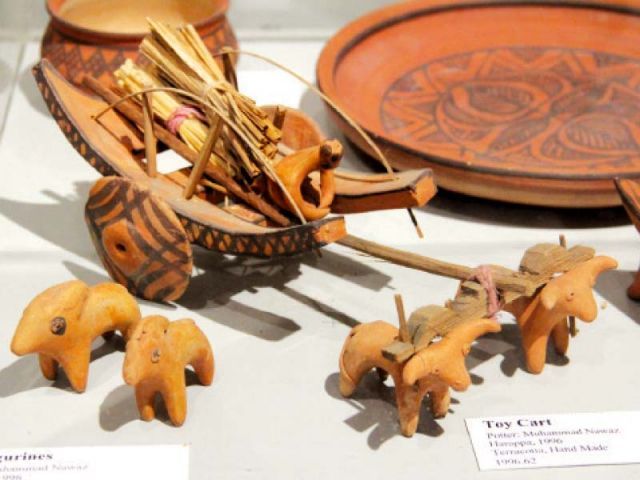The pre-Harappan cultures took root in the northwest of the subcontinent (now Pakistan) at around 7500 BC, and ushered in the Bronze Age after four millenniums, which lasted until 1300 BC. During this period, the Harappan civilisation, also known as Indus Valley civilisation, thrived during 2600 - 1900 BC in all its glory, which today, is a proud heritage of the country.

To highlight the significance of the region’s unique cultural legacy and ancestral talent, an exhibition titled Harappan Connections: Ancient Artefacts, Contemporary Potteries & Interpretive Artworks, was held recently at the Gandhara Art Space, Karachi. Curated by Dr Tehnyat Majeed and Zeb Tariq, this show is a condensed version of a more elaborate show Rediscovering Harappa: Through the Five Elements, which has been organised (Nov 2015-Apr 2016) by the Inheriting Harappa Project team at the Lahore Museum.
Notwithstanding the enormous inventory of artefacts, excavated sites, associated history, videos and works of the present day artists, the exhibition was comprehensively laid out at the Gandhara Art Space. The display and layout of exhibits was easy to observe and suitably spaced for a sequenced walk through. The generously sized timeline chart depicting six millenniums of the region’s cherished legacy was easy-to-read and instantly informative. Pristine photographs of various sites excavated between 1872-1995 such as Mohenjo Daro, Dholavira, Harappa and Lothal manifest the level of civic and architectural intellect of the ancient inhabitants.
Harappan photographs of brick structures of the ‘granary’ or ‘great hall’ and the ‘circular platforms’ for thrashing grain, makes one admire the innovative minds of that era. There are a number of pictures that depict the citadel area, wells, bathing platforms, drains, pottery kilns and craft workshops which are incredibly inspiring. The video show at the exhibition also augmented the admirable talent of the denizens of that era.
Central to the exhibition are the works of renowned ceramist Sheherezade Alam, who has produced marvels that find their origin in ancient traditions. With the backdrop of Harappan legacy, it was the impulse that she felt when she met Muhammad Nawaz, a highly skilled potter from the ancient Harappan lineage, at a Clay Symposium in Karachi. She saw numerous links between her work and Nawaz’s delicate clay figurines which inspired her to revive ancient traditional forms which boast parity with contemporary clay work. Her wheel-thrown earthenware ‘Surahi’, ‘Flat dish’, ‘Jar’ and ‘Globular pot’, demonstrate deft workmanship and impressive treatments like glazing and patina that she has honed over decades.
On the other hand, Nawaz’s delicate Indus artefacts, clay figurines, toys and an ornamental terracotta belt, albeit sculpted with the Harappan primeval character, are engaging owing to the associated heritage. His archival artefacts transport the spirit of ancient skills to the modern day clay expressionists who continue to explore this exceptional trade while carrying the legacy forward.
Author: M. Saeed Kureshi | Source: Dawn, Sunday Magazine [February 07, 2016]
